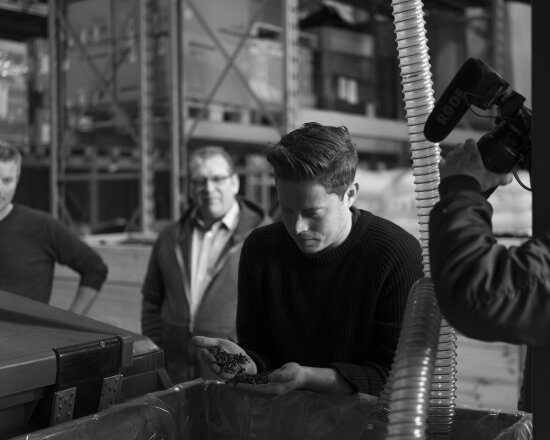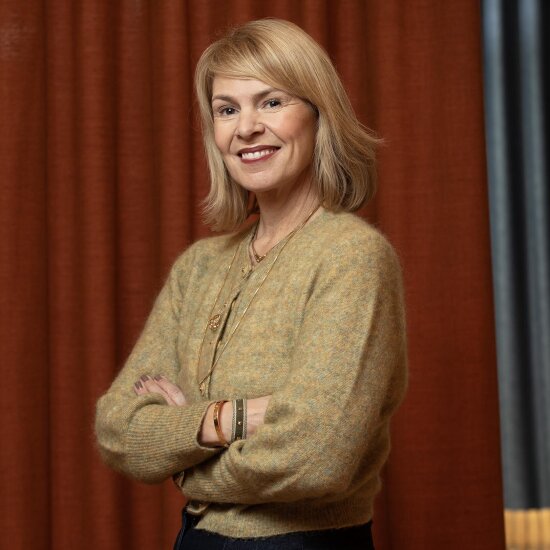Biocoal that makes farming climate neutral. More eco-friendly cruise ship traffic. Reuse of old steel beams in new buildings. A ‘city cup’ that can replace hundreds of thousands of take-away cups.
These are among the Norwegian innovation projects that together have received NOK 8.5 million from the DIP programme. This is the ninth time that the programme has allocated funding, to be used on design methodology during the idea development phase of the projects.
“The environment and sustainability are a major focus of the future production of goods and services, so it is only logical that this is reflected in the projects awarded DIP funding this year. The funding is to ensure that systematic user studies and design methodology are incorporated into the critical idea development phase. This will result in greater accuracy and, consequently, better and more socially useful innovation,” says Anne E. Bull, Senior Advisor and head of DIP at Design and Architecture Norway (DOGA).
Plastics project = climate-friendly chair
A good example of this is Snøhetta’s extensive and envelope-pushing plastics project that received DIP funding last year. Stian Alessandro Ekkernes Rossi, Snøhetta’s unofficial ‘plastics oracle’, says that a great deal has happened since the project received support to ‘gather multidisciplinary competence on recycled plastic, increase awareness in the sector and link this to actual product development’.
“We went into this with an open mind. We travelled around the country talking to researchers, the plastics industry and the waste sector. We built a plastics laboratory out of an old container and other recycled materials. And we’ve designed a chair,” explains Ekkernes Rossi.
The chair he is referring to will be put into full-scale production early next year and is based on the stackable school chair R48, a design classic from the 70s. This project is based on collaboration between Snøhetta and chair manufacturer Nordic Comfort Products (NCP).
Use of plastic from local farmers
“Local fish farmers buy tons of plastic every year for use as netting, lines, rope and so on. These are subjected to considerable wear and tear, so they need replacing often. We saw a fantastic opportunity to gain local access to materials while, at the same time, preventing the plastic from becoming waste. The perfect example of a circular economy,” adds Ekkernes Rossi.
Together with NCP, Snøhetta has created a new school chair made of 100% recycled local plastic and 100% recycled Norwegian steel. It takes only a few seconds to mould the chair’s seat, the chair is flexible and virtually free of scratches and the climate accounts are a joy to read.
“A regular chair has a footprint of around 12 to 14 CO2 equivalents per ton. This one probably has as low as six. Also, the various colours of the recycled plastics give each chair it’s own unique pattern. Children can easily recognise their own chair and the idea is to share with them its history and how it used to be something completely different before it became a chair,” says Ekkernes Rossi.
Snøhetta is also involved in a DIP project that received DIP funding this year. Together with Umoe Restaurants and Friends of the Earth Norway, they are launching a project with the potential to eradicate disposable cups, thousands of which are discarded by Norwegians every single day.
Biocoal – a ‘green’ Kinder Egg
Nortura and Felleskjøpet Agri have set themselves the ambitious goal to reduce greenhouse gas emissions at their numerous factories. They are now receiving NOK 630,000 in DIP funding to jointly research with EGGS Design how they can reduce the impact on the environment with manure, slaughter residue and grain husks.
“We both have joint owners – the farmers – and we both have sustainability and the ‘green shift’ on our agendas. This is by no means the first time we are working together to solve environmental challenges in farming, but it is the first time we are working with designers in this way,” says Ane-Guro Danielsen from Nortura.
The normal procedure is to treat the large biomass volumes from the factories as waste or incinerate them for heating. Pyrolysis ovens can be used instead to convert this biomass into biocoal, which can then be used, for example, as an alternative to sod in soil products.
“It will be an environmental Kinder Egg in which fossil fuel is replaced, waste becomes a new product and this product has an intrinsic value as, for instance, soil conditioner or feed additive. The challenge is that neither the product, market or customers are in place yet. This pilot project will serve as a strategic road map for a completely new value chain,” says Danielsen.
Eco-friendly steel recycling
While melting makes it possible to reuse steel, this does not necessarily make it environmentally friendly. Metallco Oppland has received NOK 410,000 to create a new value chain for recycled steel in the construction industry.
“Lots of quality iron, especially beams, are sent to the melting furnace. We know that recycling steel has a considerable positive environmental impact in the form of lower CO2 emissions. We now want to figure out what it will take to tap into the significant potential of recycling,” says Tom Erland Schjørlien, Marketing Director at Metallco Oppland.
Eco-friendly steel recycling
While melting makes it possible to reuse steel, this does not necessarily make it environmentally friendly. Metallco Oppland has received NOK 410,000 to create a new value chain for recycled steel in the construction industry.
Entire value chain must be changed
“The goal is to be able to remove materials from these buildings and reuse them without having to melt anything. This means that the entire value chain - including our role in it - must be changed,” says Schjørlien.
Widenoja Design, which also took part in the Norsk Stålforbund’s project, has been brought in as the design partner and will be helping to include users from the entire value chain, from demolition and recycling companies to the Norwegian Environment Agency and building authorities, in the project.
Green boats, cartons and science centres
This year’s DIP recipients include Maritime CleanTech, which has been awarded NOK 580,000 to continue its ‘Green cruising’ project. The project will be using design methodology to develop an entirely new and more sustainable cruise concept.
The Vitenparken science and experience centre at Campus Ås and Ogle Noor will be researching possibilities in the intersection between the ‘green shift’ and new digital learning technology. They have been awarded NOK 490,000 in funding to this end.
The DIP programme is financed by the Ministry of Trade, Industry and Fisheries and is headed by DOGA in collaboration with the Research Council of Norway and Innovation Norway. Since 2009, DOGA has awarded around NOK 70 million to 147 projects.
This year's DIP Projects:
- NCE Maritime CleanTech: Green cruising
- Independence Gear AS: DIGNUM
- 7Sense Products AS: Sensometrics in outdoor farming
- Alfa & Omega AS: Organisational culture that promotes innovation and change
- Landslaget for lokalaviser (National Association of Local Newspapers): The future of local paper
- Umoe Restaurants AS: The City Cup
- Q-Free ASA: City flow
- IKEA AS: Democratisation of residential planning
- DNV GL AS: Intelligent clinical reporting for precision medicine
- Vitenparken Campus Ås: Grønn Edtech – The global science centre of the future
- Safepath AS: Safebook
- Metallco Oppland AS: Economic and environmental value of scrap metal
- Ulstein Design & Solutions AS: Design-driven repositioning from ship designer to innovation partner
- Istad Nett AS
- Nordic Unmanned As: Life, equipment and nature-preserving drone service
- Nortura SA: Biocoal from slaughter waste

